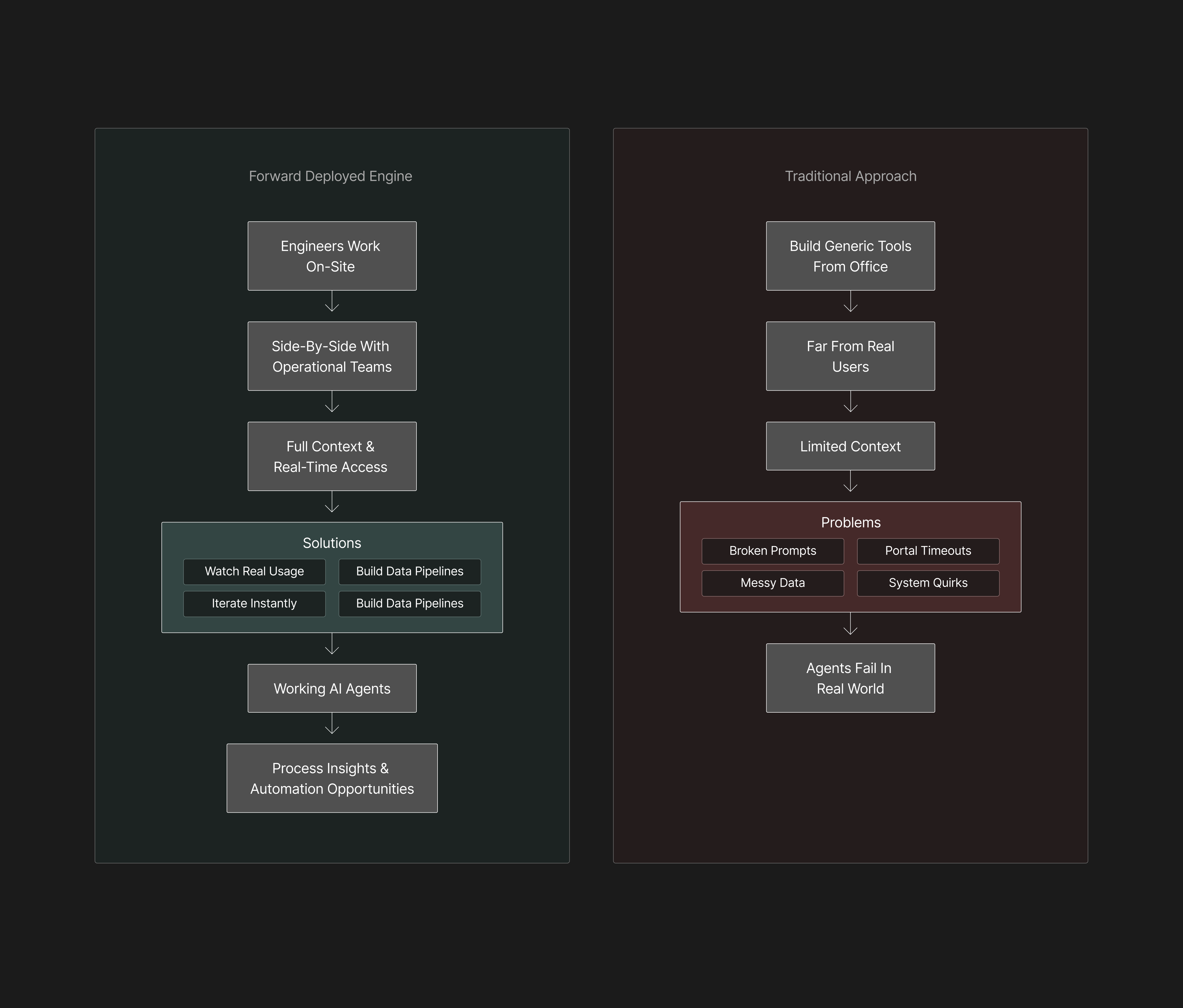.png)
Forward Deploying to Build AI Agents
AI agents have moved beyond demos. They're booking appointments, processing claims, answering support calls, and helping real teams get work done. But building an AI agent that actually works inside real-world systems, with all their quirks and edge cases isn't just about choosing the right model or API. It's about how you build.

What is Forward Deployed Engineering?
Forward deployed engineering means putting engineers directly in the loop with the people using the product. Instead of building generic tools far from the customer, these engineers work side-by-side with operational teams—inside hospitals, contact centers, billing teams, or wherever the process lives. They’re not just writing code. They’re watching real usage, handling unexpected failures, connecting to legacy systems, tuning logic, and adjusting the agent to reflect the actual workflow—not some idealized diagram.
Why It’s Essential for AI Agents
AI agents don’t operate in a vacuum. They’re not “out-of-the-box” tools that just plug in and run. They require tailoring, context, and continuous refinement. Forward deployed engineers make that possible.
Real-world workflows aren’t clean. Prompts break, portals timeout, users go off-script, and every system has its own quirks. You only catch this stuff when you're close to the ground. FDEs see what fails and immediately iterate, redesign, or patch it in real time.
Data integration is critical. Most of the value from AI agents comes from their ability to act on high-quality, real-time data—but in most orgs, that data is trapped in PDFs, browser portals, faxes, emails, or spreadsheets. Forward deployed teams build the adapters, scrapers, and pipelines to pull that data in, clean it up, and make it usable for the agent. Without this, the agent can’t reason properly and ends up hallucinating or stalling.
Tailoring is what makes the agent actually useful. A good AI agent is designed to match your org’s workflows, language, systems, and expectations.
Deploying multiple agents in this way unlocks insights that static point solutions can’t. When agents are embedded in key workflows: calls, messages, scheduling, billing—they generate rich data that didn’t exist before. For a lot of organizations, it means that there is a new data keystone that is home to some of the most valuable information for an organization. That data doesn’t just improve the agents themselves; it gives leadership visibility into process bottlenecks, common pain points, and opportunities for automation that would’ve stayed hidden.
Connect with us
We are here to help you with any questions. Drop a line and our team will get back to you as soon as possible
Get In Touch




.png)